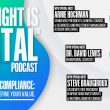by Joseph V. Amato, President and Chief Investment Officer—Equities, Jonathan Bailey, Head of ESG Investing, Neuberger Berman
What ESG, sustainable investment and impact investment mean at Neuberger Berman, and how they are consistent with active management and the diverse needs of our clients.
If you are reading this outside of the U.S., where debates about environmental, social and governance (ESG) factors, sustainable investing and impact investing are perhaps a little more settled, you may be surprised at how politicized and polarized those debates have become.
Last week, the Democratic Senate Majority Leader Chuck Schumer published an editorial in The Wall Street Journal arguing that free-market Republicans “ought to be all for ESG,” rather than trying to legislate to tell the asset management industry how to do its job. This piece was in response to a seemingly endless number of editorials arguing against “ESG” from the other side of the political spectrum.
ESG investing has become a political “football,” the subject of Congressional hearings, state and federal legislation, a pending presidential veto—even a centerpiece of a 2024 election campaign. Regulators and market participants are also adding their views into the mix.
Unfortunately, the terminology is getting conflated, which means the debate is generating more heat than insight. The result is a lot of confusion and anxiety among investors, particularly in the U.S.
Here, we try to clarify how we use these terms and, by extension, how we think about these concepts. We believe our framework is consistent with the tenets of genuine active management as well as our fiduciary duty to clients and respect for their diverse needs and objectives.
Process-Focused Investing
What is ESG? What is sustainable investing? What is impact investing?
The major problem is that these terms are often used as synonyms, when in fact they describe quite distinct things. The important distinction is between ESG-integrated investment processes and sustainability, impact and exclusion-based strategies that seek investment outcomes.
At Neuberger Berman, “ESG integration” simply means that, when we analyze a particular company in our normal investment process, we consider financially material ESG factors (alongside many, many other traditional financial metrics). The ESG factors are not solely determinative and are generally no more significant than other factors in the investment selection process.
As active managers, we regard this as a critical part of our duties as a fiduciary.
For example, General Motors (GM) is developing an electric vehicle (EV) strategy. It’s also entering major labor contract negotiations this year. If our analysts are not looking into the viability of that EV strategy (an “E” factor) or how GM’s labor relations compare with those of its competitors (an “S” factor), they’re simply not doing their job of evaluating financially material risks and opportunities. The same is true if they ignore the implications of, say, Meta’s dual voting shareholder structure (a “G” factor).
Importantly, at no point in this process are portfolio managers required to exclude or include certain stocks or sectors based on ESG factors. Acknowledging that, for example, an oil and gas company might be exposed to the risks of evolving emissions-reduction policies (an “E” factor) does not prevent it from going into a portfolio if the portfolio managers think other factors are more financially material and the potential return appropriately compensates for those risks.
Outcome-Focused Investing…
“Sustainable” investing and “impact” investing are very different from that.
A “sustainable” investment strategy seeks to achieve a financial goal by investing in high-quality issuers with sustainable business models, practices, products or services and leadership on relevant ESG factors, and which do no significant harm to the environment or society. That’s a sustainability outcome-driven portfolio.
An “impact” strategy makes investments with the intention to generate positive, measurable social and environmental outcomes alongside a market rate financial return. The goal is a clear, positive outcome for people and/or the planet.
That focus on outcomes means investment decisions can differ from those made through an ESG-integrated process. While a portfolio manager may rate GM’s EV strategy highly, they may prefer Tesla for a Sustainable or Impact portfolio because it is a pure-play EV manufacturer, therefore weighing the “E” factor more heavily than other factors.
…Is Client-Driven
At Neuberger Berman, we clearly define and label our sustainable and impact investing strategies, and clients make an informed, conscious decision to invest in those strategies. In some jurisdictions, such as some in Europe, we are required to abide by regulatory standards that require greater focus on sustainability outcomes. Strategies that exclude certain sectors are also outcome-driven and always expressly chosen by the client.
As such, outcome-oriented strategies currently represent a modest (but growing) proportion of our assets under management, with very clear disclosures to ensure our clients know what they are selecting—if our products and strategies don’t have the “sustainable” or “impact” labels on them, it’s not what they’re doing.
Clarity Is Key
In our view, clarity is important. An investor that simply wants their capital to be managed with scrutiny over all the financially material risk factors (ESG as well as the more traditional factors) shouldn’t end up investing in a sustainable or impact strategy because of confusion over labels.
We think our industry, particularly passive managers, needs to improve transparency and standardization on these issues of terminology and fund names, and regulators in several markets are starting to act.
By definition, managers that passively track traditional indices are not integrating material ESG factors into security selection, so it’s no wonder investors get confused when some passive managers claim to be leaders in “sustainable investing.”
Passive managers also emphasize their engagement efforts, which can be confusing as well. If a passive manager doesn’t even need to know that GM is in the automotive business to hold a material position, and no portfolio managers engage GM management on the most material issues, such as capital allocation generally and the EV revolution specifically, what does engagement by that manager even mean? Largely box-checking across thousands of issuers by a centralized proxy voting team.
Shouldn’t ownership and engagement mean more? Investors have been told that they can pay virtually no fees, be free riders and still be engagement leaders, but that view is unlikely to stand the test of time. Real choices will be necessary.
ESG Integration: Why Now?
Unclear product labelling isn’t the only reason this terminology generates anxiety.
“Asset managers say that ESG integration is about material factors that are just like the traditional ones,” we hear some market participants say, “but if that’s the case, why have we only started hearing about them in the past decade? It feels like sustainable or even ideological investing through the back door.”
That’s an important question.
For the most part, you’re hearing about ESG factors more often precisely because they have become more financially material to business performance.
Legislators, regulators, NGOs—and most importantly consumers and investors—are increasingly focused on ESG issues.
A decade ago, many investors paid lip service to the “G” issue, for example, giving little thought to how management incentives in compensation plans, staggered boards, the lack of shareholder rights, or the ability of a board to challenge a CEO’s capital allocation plans impacted investors. Only a conscious focus on these “G” issues changed that.
As these factors gain attention, market participants press for more data and disclosure, which leads to calls for further action and yet more data. Eventually, this starts to change the business environment.
Informed Client and Investor Choice Is the Heart of Free Markets
And that evolving business environment is perhaps the most important point about ESG integration, sustainable investing and impact investing.
You may not want a sustainable portfolio, or to invest for impact, or to pursue any other sustainability outcome with your investments. If that’s the case, you certainly don’t want to find yourself invested in a product or strategy that does these things without your knowing it. Clarity of terms and clear labelling is critical.
But at the same time, some investors are choosing to go down the sustainable and impact routes, particularly in markets like Europe, and at a certain point this does begin to influence the pricing of securities. That’s what we’ve seen over the past decade, which is part of the reason why we are having this debate. If securities are being priced, in part, because of ESG considerations, then some ESG factors are, by definition, becoming financially material.
That’s why we believe integrating financially material ESG factors into investment processes is not only increasingly important, but a critical aspect of our fiduciary duty as active asset managers.















